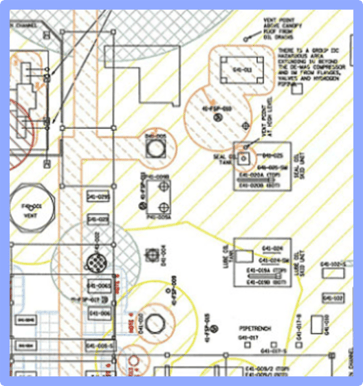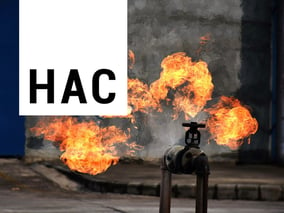History of hazardous area classification

Hazardous area classification dates back to the 18th century when the demand for energy to power the industrial revolution, and the growing demands of technology required development of the coal mining industry. Early coal mines were notorious for releases of methane gas which caused fires and explosions when ignited by flames or sparks.
As electricity became more readily available for communication, light and power within the mines, the mining industry supported research into ways to avoid igniting the flammable atmospheres that were expected to occur. Over time, the same safeguards developed for mines were also applied to above-ground facilities where the presence of flammable materials was creating similar risks of fire and explosion.
Historically, hazardous area classification has predominantly been carried out by electrical engineers, who’s technical background allowed them to both apply guidelines based off qualitative assessments to determine hazardous area zones, and then design and specify the electrical equipment within those zones.
Hazardous zone extents were very prescriptive, with clear examples given for different scenarios that were conservative enough to be applied across a range of different industries and materials. Now with standards such as IEC 60079.10, the focus has moved to understanding of the specific materials and process conditions present for a site.

Modern day hazardous area classification
From the 1990s, significant developments in computer modelling and validation by improved research techniques has advanced the understanding of flammable gas dispersion local to the release point. By the mid-2010s, further research led to internationally recognized codes and standards incorporating improved, scientifically based correlations for estimating hazardous area extents, risk assessment and flammability from first principles. These newer techniques have diverged from traditional electrical engineering foundations into the field of process and chemical engineering, where more knowledge is drawn from chemistry and fluid mechanics. These fields are not typically in an electrical engineer’s repertoire leading to a skills gap when assessing hazardous areas to modern standards.

|

|

|
| Find out about our Operational Risk Assessment Course HERE! |
Find out about our
Hazardous Area Classification Training Course HERE! |
We offer a Process Safety Incident Investigation course HERE! |
Core competency requirements for hazardous area classification
The core competency requirements for hazardous area classification have been defined by the IEC as:
- Classification should be carried out by persons who understand the nature of flammable substances, gas dispersion and ventilation and are familiar with the process aspect for the plant under consideration.
- The competency of the person shall be relevant to the nature of the plant and methodology used for carrying out the hazardous area classification.
- Appropriate continuing education or training should be undertaken by personnel on a regular basis where required.
Closing the skill-gap for existing hazardous area classifiers
With clear gaps between traditional electrical engineering education and training, and the new requirements for hazardous area classification, experienced classifiers can be left wondering how they can continue to do the job. It’s simply not practical to retrain in process engineering, nor is it entirely necessary. Instead, courses such as Safety Solutions ‘Hazardous Area Classification Training’ have been developed to help people obtain the necessary background to continue with classification of hazardous areas while meeting the competency requirements from the IEC.
Ready to take your process safety strategy to the next level?
PStrengthen your compliance with national and international standards, consult us about Hazardous Area Classification Service.
Have questions or need guidance? GET IN TOUCH. We're here to help.